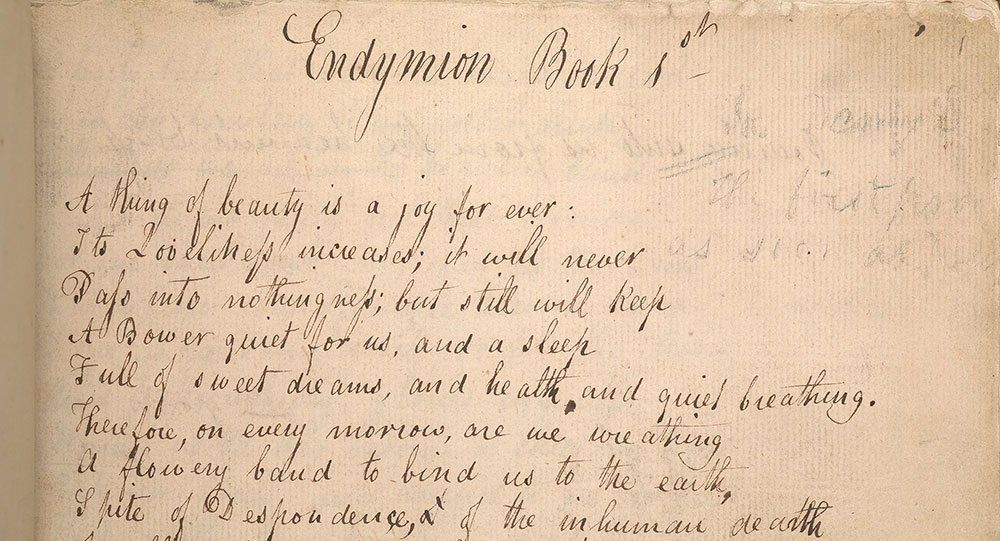
John Keats began writing poetry in 1814 and would publish his first book of collected poems three years later. But it was in 1818, with the publication of Endymion: A Poetic Romance, that Keats became more widely recognized for his verse, even if that recognition was not entirely positive. Keats regarded his 4,000-line verse romance Endymion as a creative experiment—a “Pioneer,” a “great trial of invention,” a “feverish attempt, rather than a deed accomplished.” Envisioning a literary career in the mold of Virgil, Dante, or Milton, he felt compelled to try his hand at writing a long poem, asking, in a letter to a friend, “Did our great Poets ever write short Pieces?”
Endymion follows the wanderings of its eponymous shepherd-hero, whose love for the moon goddess Cynthia takes him through sylvan dreamscapes, underground chambers, and the ocean’s “hollow vast.” The poem’s lush imagery, sometimes overwrought, conjures up a “mazy world / Of Silvery enchantment” (I.460–61), a realm of gentle rills and cloistered bowers. But as Keats himself admitted, the poem served as a testing ground for future literary endeavors: it was not his best work, but it presaged better things to come.
Inveterate in their dislike of progressive writers such as Leigh Hunt and Keats, Tory critics John Gibson Lockhart and John Wilson Croker wrote searing reviews of Endymion in Blackwood’s Edinburgh Magazine and the Quarterly Review, attacking the poem’s politics as much as its literary merit. Lockhart characterized the poem’s enjambed lines and narrative digressions as indecorous and politically suspect, while Croker dismissed Endymion outright as “nonsense,” claiming he could read only the first of its four books. The infamous bad press hurled at Endymion created the myth of a thin-skinned Keats “snuffed out by an Article,” as Lord Byron quipped in his mock-epic poem Don Juan (1819–24). Though undoubtedly affected by these reviews, in reality Keats was resilient, persisted in his craft, and went on to write some of the most celebrated lyric poetry in English.
No early drafts of Endymion survive. The manuscript at the Morgan is for the most part a fair copy prepared for the printer, though it does bear some revision in Book I. The first page of the manuscript, includes a line and a half deleted by Keats before the poem went to press—a line referencing King Arthur (“and before us dances / Like glitter on the points of Arthur’s lances”).
John Keats, detail of Endymion: A Poetic Romance, p. 1. Autograph manuscript, 1818. MA 208. Purchased by J. Pierpont Morgan, 1897.
